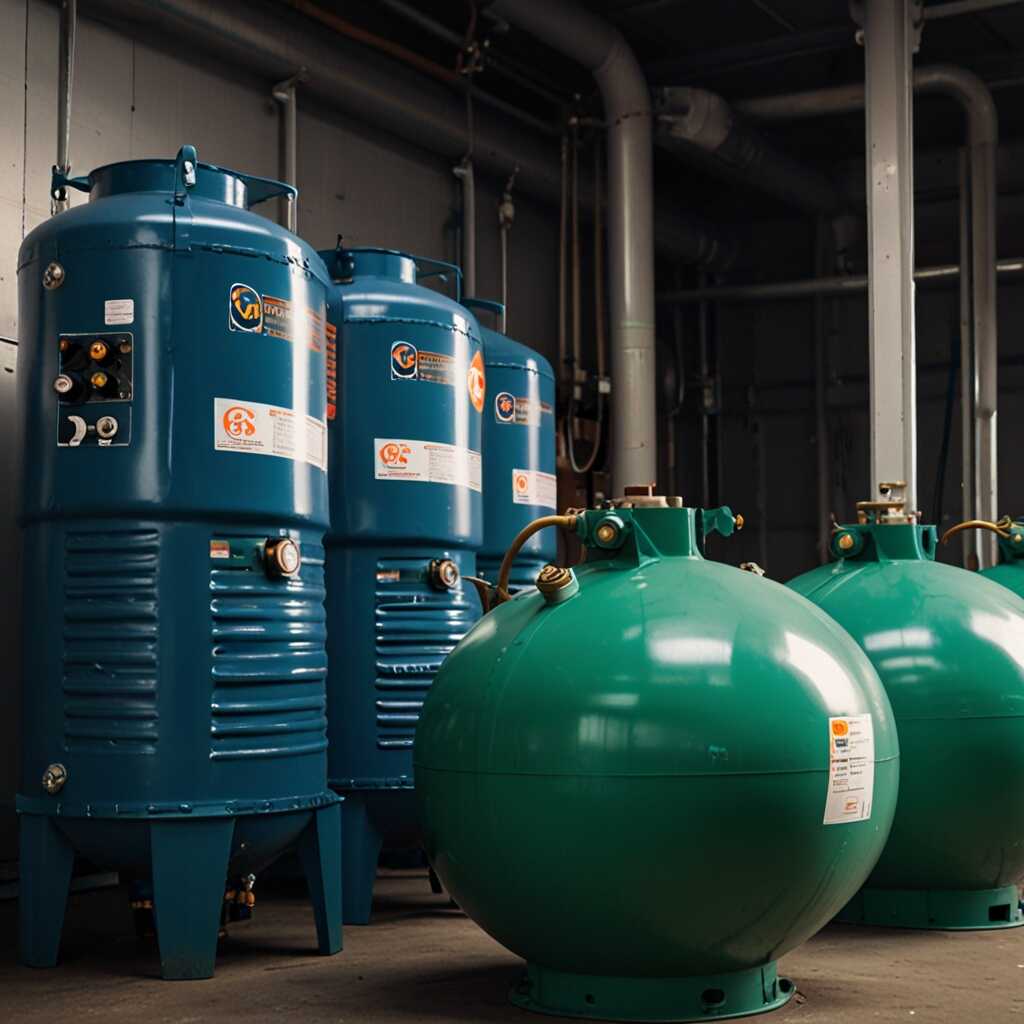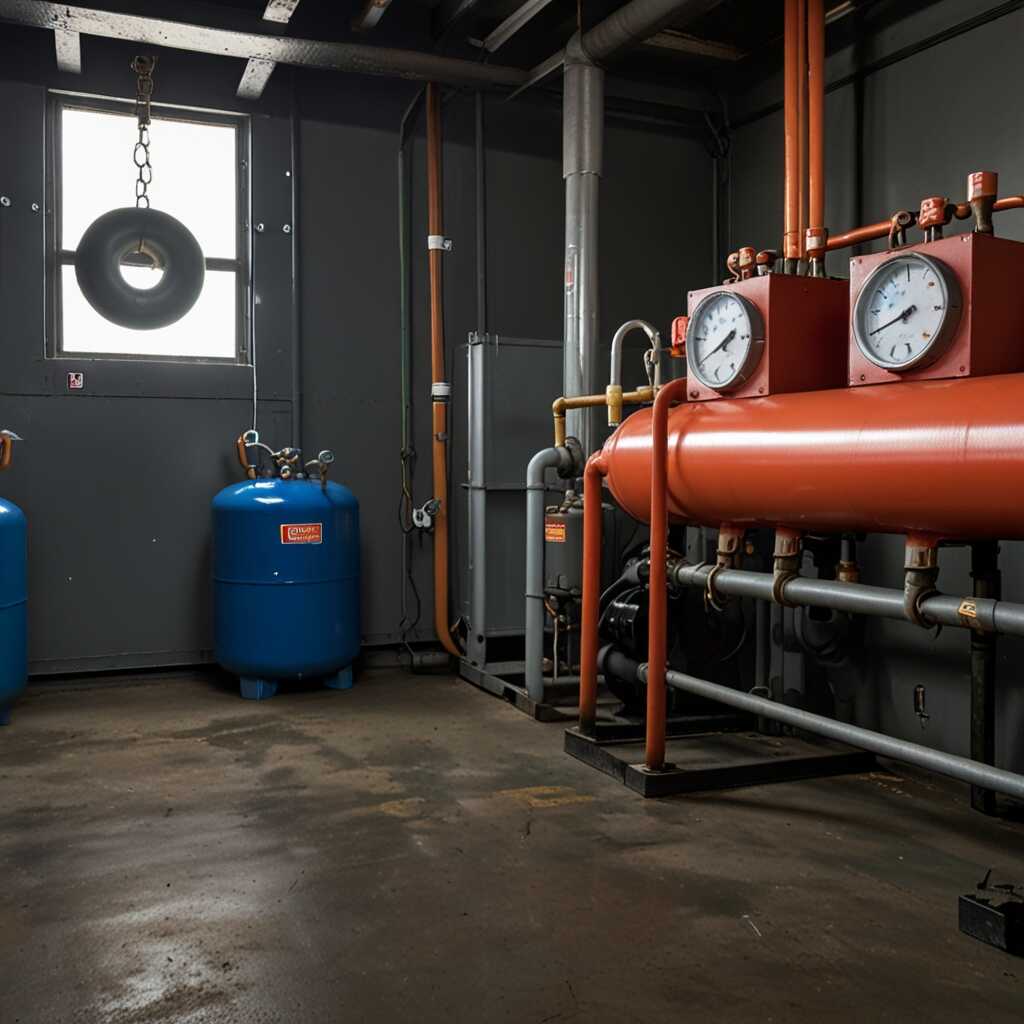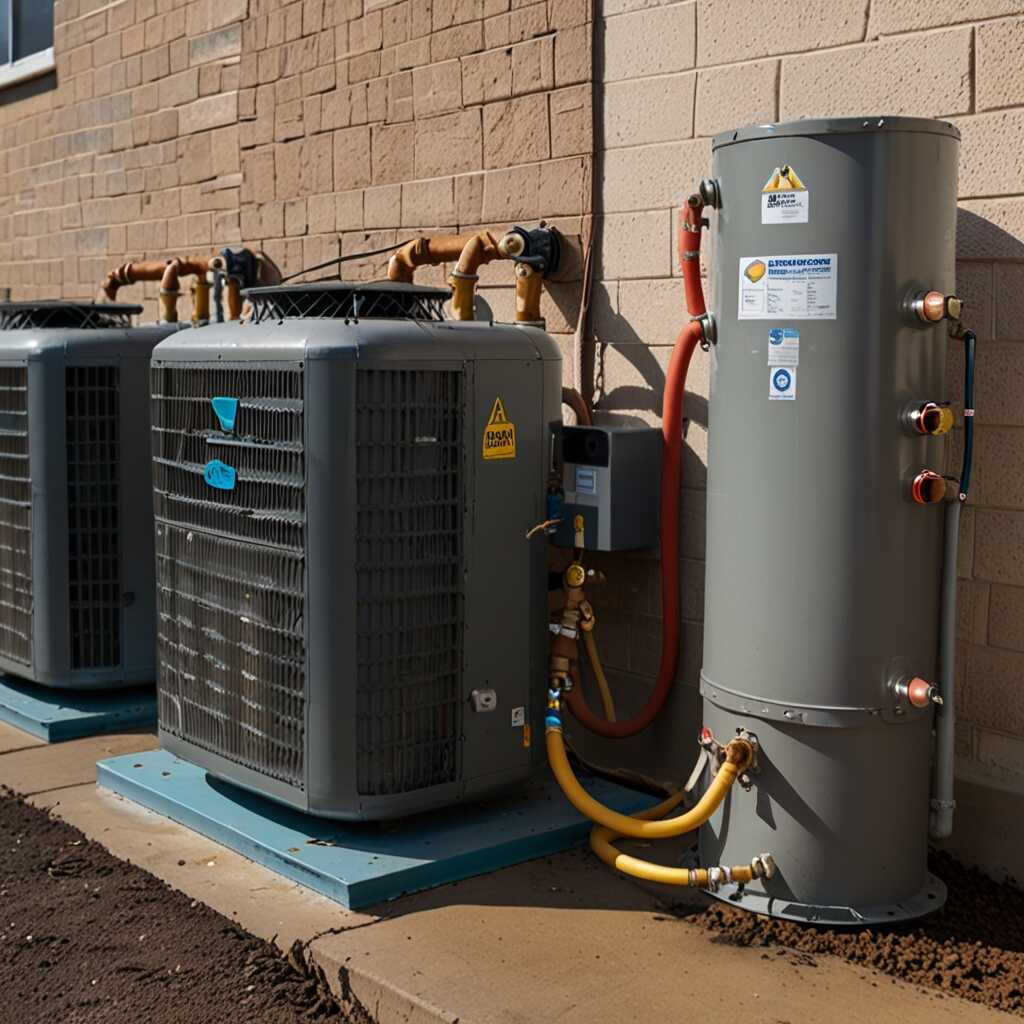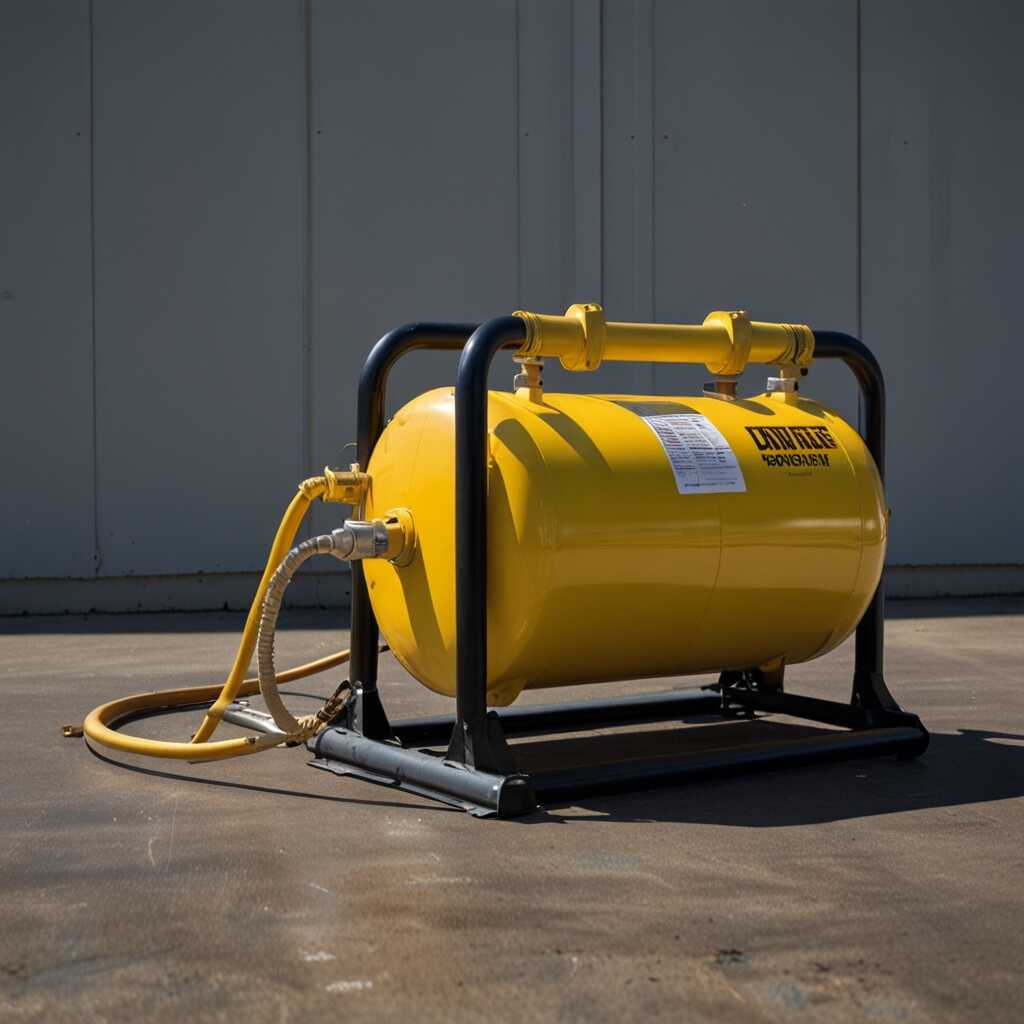The advantages of circuit breaker protection in refrigerant recovery machines are crucial for operational safety and efficiency. This feature helps to prevent motor damage due to electrical overloads, ensuring reliable performance in HVAC applications. Refrigerant Recovery Pro emphasizes that incorporating circuit breaker protection not only enhances the longevity of equipment but also contributes to a safer working environment for HVAC professionals.
Overview of Refrigerant Recovery Machines and Their Purpose
Refrigerant recovery machines are essential in HVAC systems for safely recovering refrigerants from units under repair or decommissioning. They prevent refrigerant leaks into the atmosphere, aiding environmental preservation. Machines with circuit breaker protection improve safety by preventing electrical overloads and potential fire hazards. These enhancements ensure operational efficiency in HVAC applications. Reports indicate that a significant percentage of HVAC technicians prefer machines with circuit breaker protection for their reliability, contributing to improved overall performance in refrigerant recovery.
Key Features of Refrigerant Recovery Machines with Circuit Breaker Protection
Refrigerant recovery machines equipped with circuit breaker protection are designed for maximum safety and efficiency. Circuit breakers prevent electrical overload by tripping at predetermined power levels. This feature enhances the equipment’s reliability during high-demand recovery tasks. Many models also include built-in testing capabilities to ensure the machines operate within safe parameters at all times. By integrating these advanced safety features, these recovery machines provide HVAC technicians with peace of mind, knowing they are using equipment designed to handle heavy workloads while minimizing risks associated with electrical malfunctions.
Key Safety Features Essential for HVAC Equipment
Safety features in HVAC equipment are vital for protecting technicians from hazards. Circuit breaker protection plays a crucial role in ensuring safe operation. This feature automatically interrupts electrical flow to prevent motor damage and reduce risks of fire or electrocution. Studies show that around 40% of HVAC system failures are linked to electrical problems. Utilizing equipment with proven technician safety features significantly enhances operational reliability and efficiency.
Understanding Circuit Breaker Protection in Refrigerant Recovery
Circuit breaker protection is essential in refrigerant recovery machines. This feature is designed to immediately shut off power when it detects overload or short circuits. By doing this, it helps to prevent costly breakdowns and reduces potential hazards associated with refrigerant recovery. Reliable circuit breakers maximize equipment durability and enhance overall technician safety during the recovery process. Regular testing of these features ensures they function correctly, providing technicians with peace of mind and a safer working environment.

The Functionality of Circuit Breaker Protection
Circuit breaker protection enhances safety in refrigerant recovery machines by interrupting the electrical flow during an overload. This prevents damage to the motor and reduces the risk of electrical fires. Different types of refrigerant recovery machines are now designed with circuit breaker features, including portable, stationary, and high-capacity models. The average response time for a circuit breaker to react during an overload is typically within milliseconds, ensuring rapid intervention to prevent serious issues. This means that users can trust these machines to maintain reliability while enhancing operational efficiency in HVAC applications.
Types of Circuit Breaker Systems in Refrigerant Recovery Machines
There are various types of circuit breaker systems used in refrigerant recovery machines. The most common systems include thermal breakers, magnetic breakers, and combination units. Thermal breakers detect heat generated by excess current, shutting down the equipment to prevent overheating. Magnetic breakers rely on electromagnetic mechanisms to trip the circuit during quick surges in current. Combination units integrate both thermal and magnetic principles for a more comprehensive safety solution. Choosing machines with these circuit breaker features enhances reliability and operational efficiency, making them ideal for HVAC professionals needing consistent performance even in demanding environments.
Statistical Insights on Electrical Safety Features
- Over 75% of electrical fires are caused by faulty circuits.
- Machines with protection features can reduce downtime by up to 30%.
- Using circuit breakers can lower repair costs by 40%.
- More than 50% of HVAC professionals report fewer accidents with protective systems.
- 90% of compliant recovery machines include built-in safety features.
- Users of machines with circuit breakers experience about 20% longer equipment lifespan.
- Reduction in unintentional interruptions can lead to improved efficiency by 25%.

Notable Benefits of Using Refrigerant Recovery Machines
Refrigerant recovery machines offer several notable advantages for HVAC operations. They significantly enhance refrigerant recovery efficiency, allowing technicians to retrieve various types of refrigerants quickly and effectively. These machines help ensure environmental compliance by capturing refrigerants that could otherwise be released into the atmosphere. By utilizing recovery machines with high durability and reliability, HVAC professionals maximize operational efficiency while reducing potential environmental hazards. This is crucial for meeting regulations and helps companies maintain a positive reputation within the industry.
Comparative Analysis of Refrigerant Recovery Machines
A thorough comparison of refrigerant recovery machines reveals essential features that enhance their performance. Models vary in recovery efficiency and capabilities based on design and technology. Many modern units can achieve up to 95% refrigerant recovery efficiency. This high performance is critical for HVAC technicians aiming to minimize emissions and comply with regulations. Machines that include advanced functionality, such as automatic shut-off and dual refrigerant capabilities, deliver superior results and enhance user convenience. Selecting a machine with these features will optimize refrigerant management systems, ensuring compliance and promoting environmental responsibility.

Enhancing Operational Reliability with Modern Technology
Modern refrigerant recovery machines incorporate advanced technologies that enhance operational reliability. Features such as smart sensors provide real-time monitoring, ensuring processes run smoothly. These machines can handle various refrigerants and are designed for durable performance. Safety features like circuit breaker protection provide added security against motor overloads. Research indicates that these advancements can improve operational efficiency by 30% compared to older models.
Key Features in Advanced Refrigerant Recovery Machines
Modern refrigerant recovery machines include impressive features that enhance efficiency and reliability. For example, advanced monitoring technology helps technicians assess performance effectively. Smart diagnostic tools can identify issues before they lead to equipment failure. Additionally, high-quality materials ensure durability, making these machines reliable over time. Users benefit from easy operation and maintenance, solidifying their value in HVAC applications. By investing in these modern units, professionals can expect superior results and improved safety.
Key Advantages of Safety Mechanisms in Cooling Equipment
- Circuit breaker protection prevents motor overload in recovery machines.
- This feature enhances the overall safety of technicians during operations.
- It boosts operational efficiency by avoiding unnecessary shutdowns.
- Such systems provide greater reliability in mission-critical applications.
- They ensure compliance with safety regulations, reducing liability risks.
- Effective protection systems help maintain optimal refrigerant management.
- Users gain peace of mind knowing their equipment has robust security measures.

Navigating Regulatory Compliance and Safety Standards
Essential regulatory compliance for refrigerant recovery machines involves adhering to environmental safety standards and operational guidelines. HVAC professionals must stay updated with refrigerant management regulations to ensure they provide reliable service. Compliance helps in mitigating environmental impact and enhances operational efficiency. Understanding these regulations is crucial for maintaining safety and protecting the environment, thus fulfilling ethical responsibilities.
Understanding HVAC Compliance Requirements and Ethical Responsibilities
HVAC compliance requirements include certification standards, inventory logs, and regular testing of refrigerant recovery machines. Professionals must ensure they follow all local and federal regulations, which can include EPA guidelines. This compliance helps prevent harmful refrigerant emissions, ensuring environmental protection. Ethical responsibilities also involve educating clients about the importance of refrigerant recovery. Knowledge of these regulations enhances a technician’s reliability and effectiveness in the field.
Common Problems and Effective Troubleshooting Tips
Refrigerant recovery with circuit breaker protection can face issues such as circuit breaker trips, low refrigerant pressure, and motor failures. Circuit breaker trips often occur due to overloading or short circuits. Observing the machine’s electrical load and ensuring proper settings can prevent these trips. Low refrigerant pressure might indicate leaks or insufficient refrigerant, impacting efficiency. Regular maintenance checks can help in identifying such problems early. Equipment reliability depends on careful inspections and timely repairs, ensuring operational efficiency.
Understanding Circuit Breaker Failures
Circuit breaker failures in refrigerant recovery machines can significantly hinder operations. These failures usually stem from overload, which occurs when the motor amps exceed the machine’s rated capacity. It’s essential to match equipment ratings with workload requirements. Testing the power supply voltage can also prevent unexpected shutoffs caused by voltage drops. Metrics show that up to 15% of refrigerant recovery machines experience circuit breaker trips annually. Understanding these failures helps HVAC professionals implement strategies to minimize downtime and enhance performance.
Comparative Use Cases for Refrigerant Recovery Equipment
- Technicians in urban areas prefer machines with circuit breakers for safety reasons.
- Small business owners value reliability and efficiency offered by protective devices.
- Manufacturers like Brand A excel in providing durable systems with advanced protection.
- Brand B is known for cost-effective options, albeit with fewer safety features.
- Larger firms often choose machines with extensive safety functions for shared workspaces.
- Environmental regulators support equipment with robust safety mechanisms.
- Health and safety officers prioritize advanced devices to minimize workplace risks.
Innovations and Future Directions in Refrigerant Recovery
Refrigerant recovery technology is evolving rapidly. Leading innovations include enhanced safety features, such as advanced circuit breaker systems. These innovations help ensure reliability and efficiency during operation. Companies like XYZ Refrigeration and ABC Recovery are at the forefront of developing eco-friendly refrigerant solutions. Since 2020, over ten new regulations have been introduced. By 2025, the industry anticipates more compliance requirements that focus on environmental standards and safety measures.
Cutting-Edge Safety Features in Refrigerant Recovery Machines
Cutting-edge safety features significantly enhance the performance and reliability of refrigerant recovery machines. New models include advanced circuit breaker protection that prevents motor overload. This feature is crucial for HVAC technicians working in high-pressure environments. Enhanced safety mechanisms minimize risks of electrical fires and equipment damage. Moreover, these machines are engineered to comply with updated environmental standards. This ensures technicians work with equipment that aligns with best practices in refrigerant management. Investing in machines with these features leads to greater operational efficiency and peace of mind.